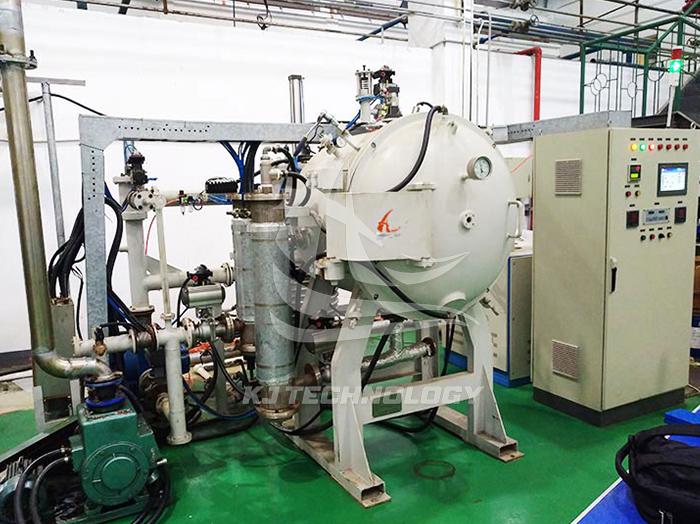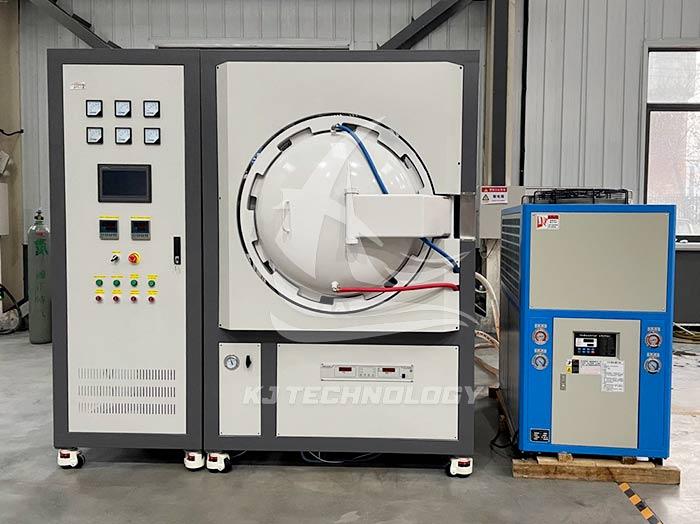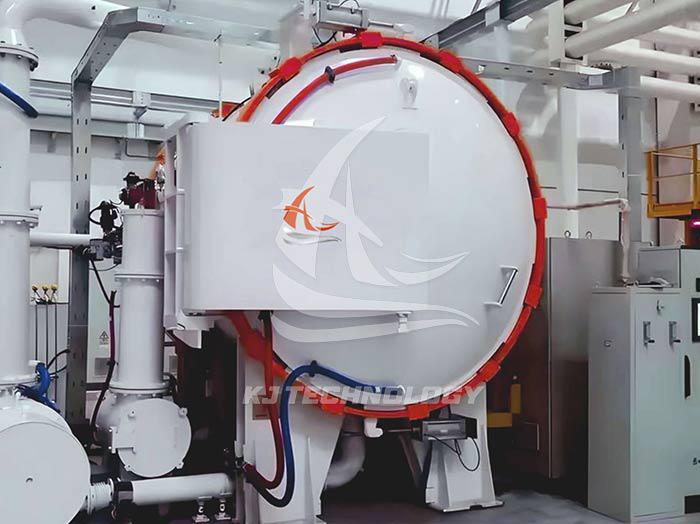What gases can be used in vacuum annealing furnaces?
 03-25-2025 Author: KJ technology
03-25-2025 Author: KJ technology
The vacuum annealing furnace can be filled with various gases during operation to meet the requirements of different materials and processes. Here are some common types of gas and their functions:
Inert gas:
Argon (Ar): One of the most commonly used inert gases, used to prevent material oxidation and corrosion, reduce the formation of surface defects, and improve product quality. Argon gas is commonly used for high-temperature treatment, such as heat treatment, melting, and quenching.
Nitrogen (N2): Although nitrogen is not a truly inert gas, under certain conditions, it can be used as a protective atmosphere to prevent surface oxidation and corrosion of metals. Nitrogen also has good purity and stability, which can control the diffusion of alloying elements. However, it should be noted that at high temperatures, nitrogen may react with certain steels to form nitrides.
Helium (He): It is a relatively valuable inert gas that can be used for laboratory level research due to its minimal chemical reactions. In a vacuum environment, helium can prevent any oxidation reactions from occurring, allowing materials to be processed with higher quality.
Hydrogen (H2):
Hydrogen is a highly reactive gas and is usually not used alone. But in specific situations, such as during annealing, adding an appropriate amount of hydrogen can reduce the oxidation and decarburization of materials, thereby improving product quality. Hydrogen is commonly used for bright annealing, annealing of non-ferrous metals, and annealing processes of certain stainless steels and electrical steels.
Heat absorbing gas mixture:
This gas mixture is commonly used in heat treatment processes that require a reducing atmosphere, such as bright hardening, sintering applications that require reducing atmosphere, carbon repair of steel forgings, etc. The endothermic gas mixture can be produced by introducing a mixture with a very low ratio of air and fuel into an externally heated distiller, which contains an active catalyst (such as nickel) for cracking the mixture. The typical composition is 40% hydrogen, 20% carbon monoxide or carbon dioxide, and 40% nitrogen.
Other gases:
According to the specific annealing process and material characteristics, other gases such as carbon monoxide (CO), carbon dioxide (CO2), ammonia (NH3), propane (C3H8), methane (CH4), and butane (C4H10) can also be selected. These gases can play specific roles in specific annealing processes, such as controlling atmosphere composition, promoting material chemical reactions, etc.
In summary, there are various types of gases that can be introduced into a vacuum annealing furnace, and the specific choice of gas depends on multiple factors such as the annealing material, annealing purpose, and cost considerations. In practical applications, comprehensive consideration and selection need to be made based on specific circumstances.








